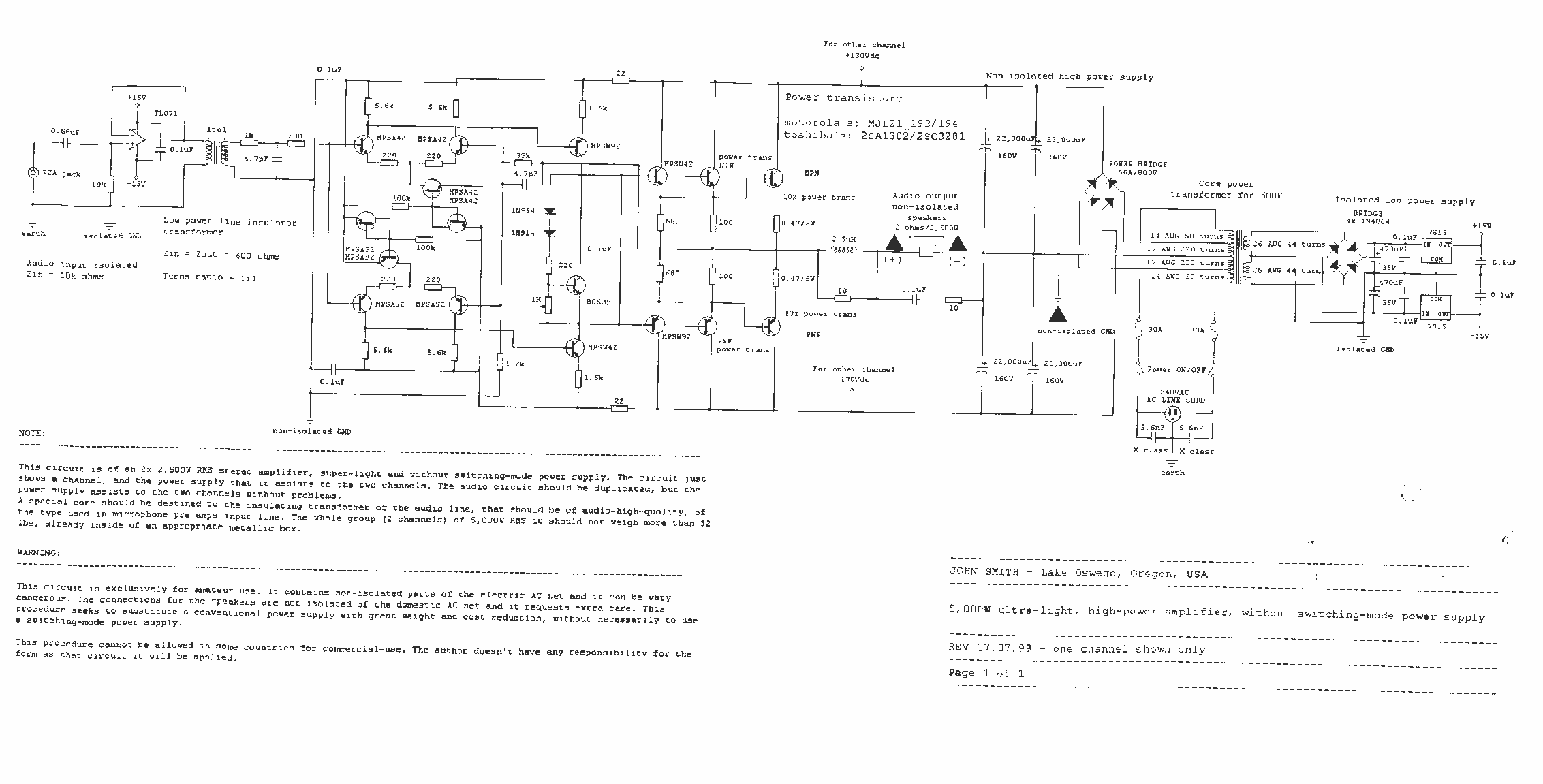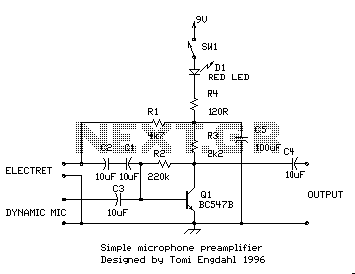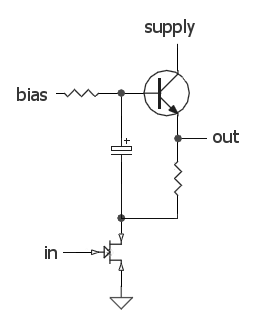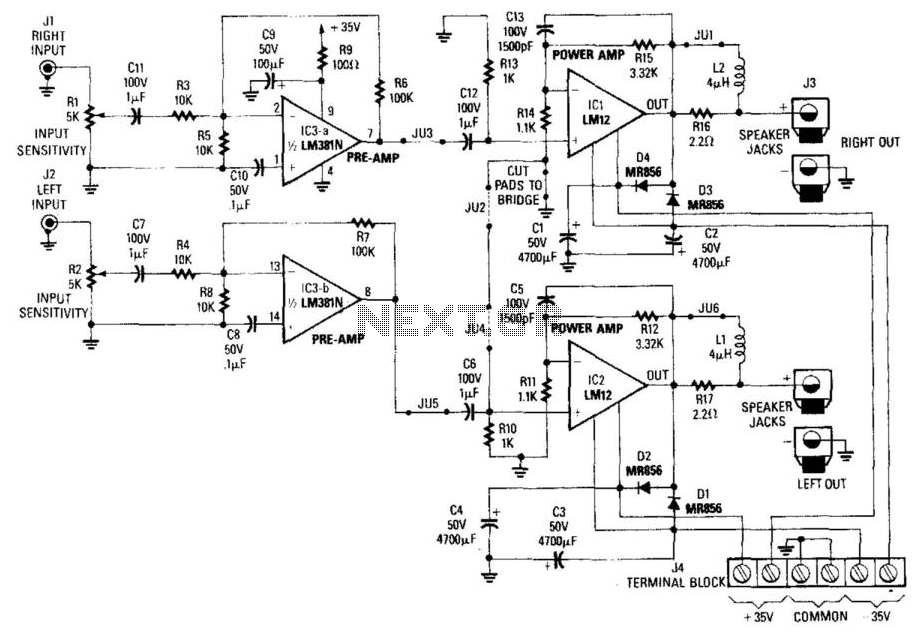
Quality Stereo Wireless Microphone or Audio Link
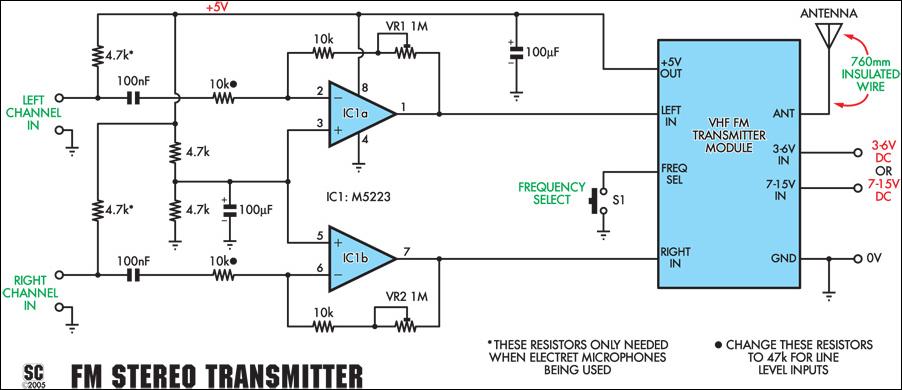
This stereo FM wireless microphone provides a high-quality audio link. It has been tested successfully over a distance of 50 meters, demonstrating solid performance. This wireless microphone distinguishes itself by offering stereo sound with impressive audio quality. Additionally, it features an excellent range, maintaining noise-free operation even at distances greater than 50 meters, although the receiver was not tested beyond that point. The device is straightforward to assemble, requiring minimal setup, and is affordably priced, which may lead some to underestimate its quality. However, it is recommended to try it for a pleasant surprise. The assembly process is simplified as the transmitter module is pre-assembled. Users only need to integrate the microphone module, which includes electret microphones, a preamplifier, and level controls, by soldering the transmitter module onto it in a "piggyback" configuration. The transmitter module is crystal-locked, eliminating the drift issues common in earlier wireless microphones. It offers seven selectable frequencies ranging from 106.7 MHz to 107.7 MHz. Furthermore, the transmitter module can operate at line level, allowing it to be used as a line-level transmitter for distributing audio throughout a home. The sensitivity is approximately 100 mV. Oatley Electronics, the designer of the kit, also offers the transmitter module separately for those interested. The kit provides two power supply options: 3-6V or 7-15V DC, with the latter resulting in lower current consumption. The transmitter module includes a 5V output rail to power the preamplifier module. Two electret microphone inserts are included in the kit, which can be directly soldered to the PCB for a fully self-contained project or connected via mini shielded coaxial cables. Alternatively, users can incorporate professional microphones, whether electret or dynamic types, although no specific provisions have been made for their connection.
This stereo FM wireless microphone circuit operates using a transmitter module that is designed to deliver high-quality audio transmission over a considerable distance. The circuit typically consists of several key components, including the transmitter module, microphone module, and power supply circuitry.
The transmitter module is the heart of the system, employing a crystal-locked oscillator to maintain frequency stability, which is crucial for clear audio transmission. The selectable frequency feature is facilitated by a synthesis circuit, allowing the user to choose from seven frequencies. This flexibility helps avoid interference from other wireless devices operating in the vicinity.
The microphone module contains electret microphones that convert sound into electrical signals. These microphones are coupled with a preamplifier to boost the signal strength before transmission. The level controls within the module allow for adjustments to ensure optimal audio levels, preventing distortion or low volume.
Power supply options enhance the versatility of the microphone system. The choice between 3-6V and 7-15V DC allows users to select a power source that best suits their needs, with the higher voltage option contributing to lower current drain, which is beneficial for battery-powered applications.
The design of the circuit is user-friendly, making it accessible even for those with limited electronics experience. The assembly process is straightforward, with clear instructions for soldering the components together. The inclusion of two electret microphones provides flexibility in microphone placement and configuration, while the option to use professional microphones expands its applicability in various audio scenarios.
Overall, this stereo FM wireless microphone circuit presents a reliable solution for wireless audio transmission, combining quality performance, ease of assembly, and adaptability for different audio applications.This stereo FM wireless microphone also makes a great quality audio link. We tested it to beyond 50 meters and it was rock solid. It`s certainly not the first wireless microphone we`ve ever published but this one is a little different. It`s stereo, providing surprisingly good quality sound. Second, it has a really good range. We tested it at well over 50m and it was still performing very well noise-free, in fact but at the time we couldn`t get our receiver any further away. So it`s likely to have even better range than that. It`s easy to build, requires very little setup. and it`s cheap! In fact, the low price might turn some people off, thinking it`s low quality. Try it - and be pleasantly surprised! Third, it really is simple to build the hard work (the transmitter module) is already done for you. It`s just a matter of assembling the microphone module, which contains the electret mics themselves, preamp and level controls, and soldering the transmitter module onto it, "piggy back" style.
Finally, the transmitter module is crystal-locked, so you won`t have the drift probles of some earlier wireless microphones. And just in case you were wondering, that doesn`t mean the output is locked to one particular frequency it has a nifty synthesis circuit built in to give you the choice of seven different frequencies between 106.
7MHz and 107. 7MHz. By the way, the transmitter module is quite capable of operating at line level if you want just a line level transmitter (eg, to feed an audio program around your home). Sensitivity is about 100mV. Oatley Electronics, who designed the kit, have the transmitter module available by itself if that`s what you`re after.
But more on that anon. You also have the choice of two power supply levels 3-6V or 7-15V DC. The latter results in a lower current drain. The transmitter module also has a "5V out" rail to supply power to the preamp module. Two electret microphone inserts are supplied in the kit. These can be soldered direct to the PC board to make it a fully self-contained project or they can be attached to the board via suitable lengths of mini shielded coax cable. A third option is to use "proper" microphones they can be electret or dynamic types but no provision has been made for plugging these in.
🔗 External reference
This stereo FM wireless microphone circuit operates using a transmitter module that is designed to deliver high-quality audio transmission over a considerable distance. The circuit typically consists of several key components, including the transmitter module, microphone module, and power supply circuitry.
The transmitter module is the heart of the system, employing a crystal-locked oscillator to maintain frequency stability, which is crucial for clear audio transmission. The selectable frequency feature is facilitated by a synthesis circuit, allowing the user to choose from seven frequencies. This flexibility helps avoid interference from other wireless devices operating in the vicinity.
The microphone module contains electret microphones that convert sound into electrical signals. These microphones are coupled with a preamplifier to boost the signal strength before transmission. The level controls within the module allow for adjustments to ensure optimal audio levels, preventing distortion or low volume.
Power supply options enhance the versatility of the microphone system. The choice between 3-6V and 7-15V DC allows users to select a power source that best suits their needs, with the higher voltage option contributing to lower current drain, which is beneficial for battery-powered applications.
The design of the circuit is user-friendly, making it accessible even for those with limited electronics experience. The assembly process is straightforward, with clear instructions for soldering the components together. The inclusion of two electret microphones provides flexibility in microphone placement and configuration, while the option to use professional microphones expands its applicability in various audio scenarios.
Overall, this stereo FM wireless microphone circuit presents a reliable solution for wireless audio transmission, combining quality performance, ease of assembly, and adaptability for different audio applications.This stereo FM wireless microphone also makes a great quality audio link. We tested it to beyond 50 meters and it was rock solid. It`s certainly not the first wireless microphone we`ve ever published but this one is a little different. It`s stereo, providing surprisingly good quality sound. Second, it has a really good range. We tested it at well over 50m and it was still performing very well noise-free, in fact but at the time we couldn`t get our receiver any further away. So it`s likely to have even better range than that. It`s easy to build, requires very little setup. and it`s cheap! In fact, the low price might turn some people off, thinking it`s low quality. Try it - and be pleasantly surprised! Third, it really is simple to build the hard work (the transmitter module) is already done for you. It`s just a matter of assembling the microphone module, which contains the electret mics themselves, preamp and level controls, and soldering the transmitter module onto it, "piggy back" style.
Finally, the transmitter module is crystal-locked, so you won`t have the drift probles of some earlier wireless microphones. And just in case you were wondering, that doesn`t mean the output is locked to one particular frequency it has a nifty synthesis circuit built in to give you the choice of seven different frequencies between 106.
7MHz and 107. 7MHz. By the way, the transmitter module is quite capable of operating at line level if you want just a line level transmitter (eg, to feed an audio program around your home). Sensitivity is about 100mV. Oatley Electronics, who designed the kit, have the transmitter module available by itself if that`s what you`re after.
But more on that anon. You also have the choice of two power supply levels 3-6V or 7-15V DC. The latter results in a lower current drain. The transmitter module also has a "5V out" rail to supply power to the preamp module. Two electret microphone inserts are supplied in the kit. These can be soldered direct to the PC board to make it a fully self-contained project or they can be attached to the board via suitable lengths of mini shielded coax cable. A third option is to use "proper" microphones they can be electret or dynamic types but no provision has been made for plugging these in.
🔗 External reference
